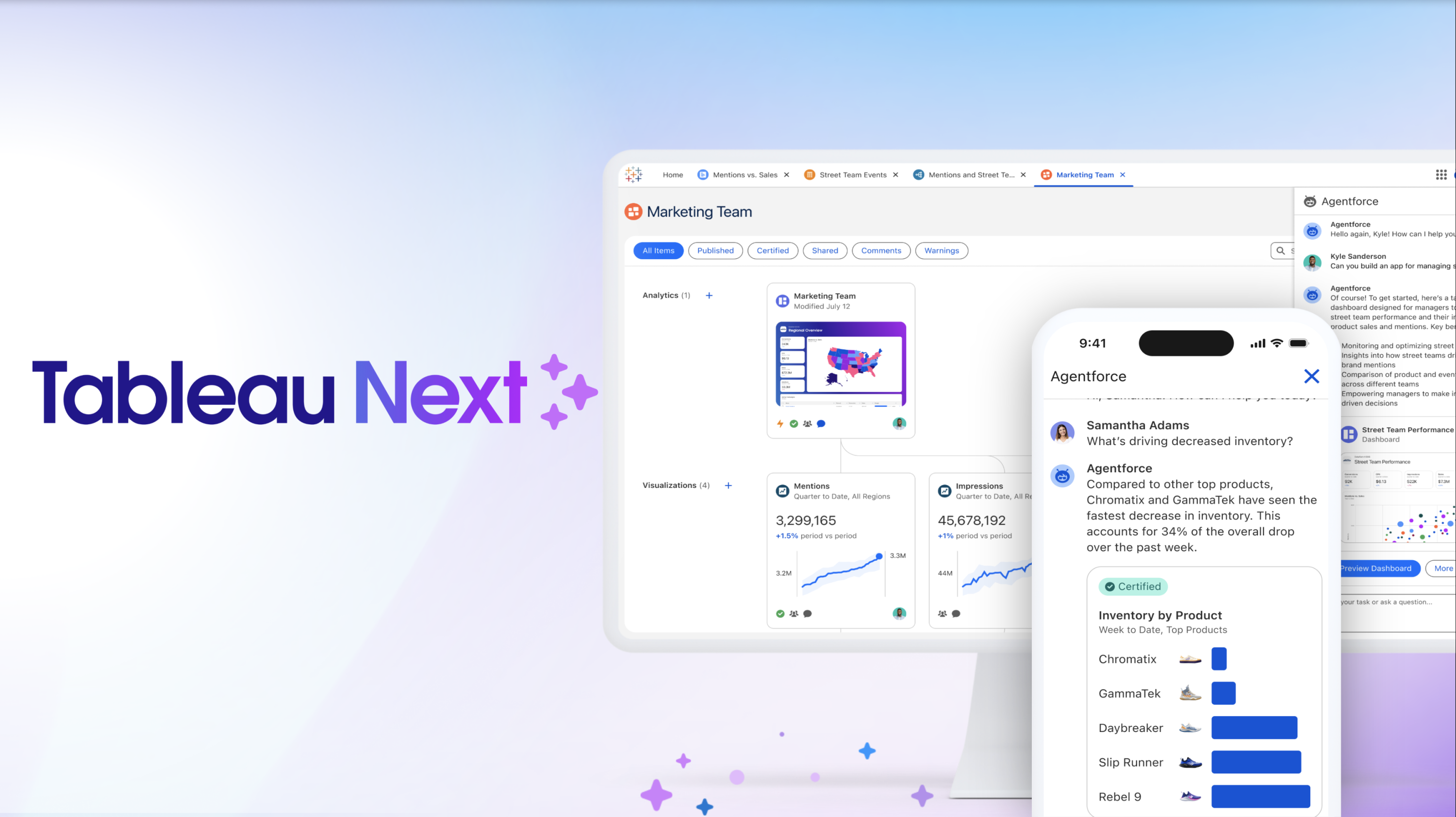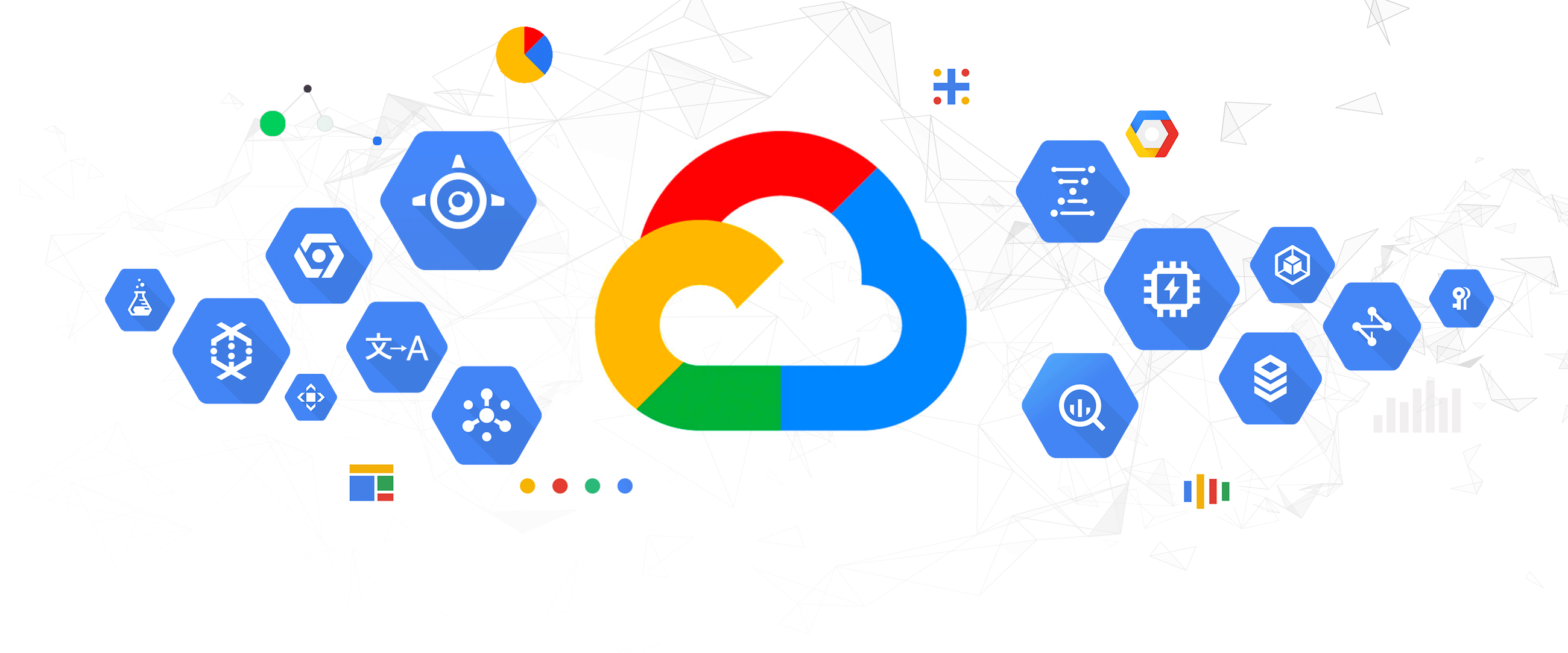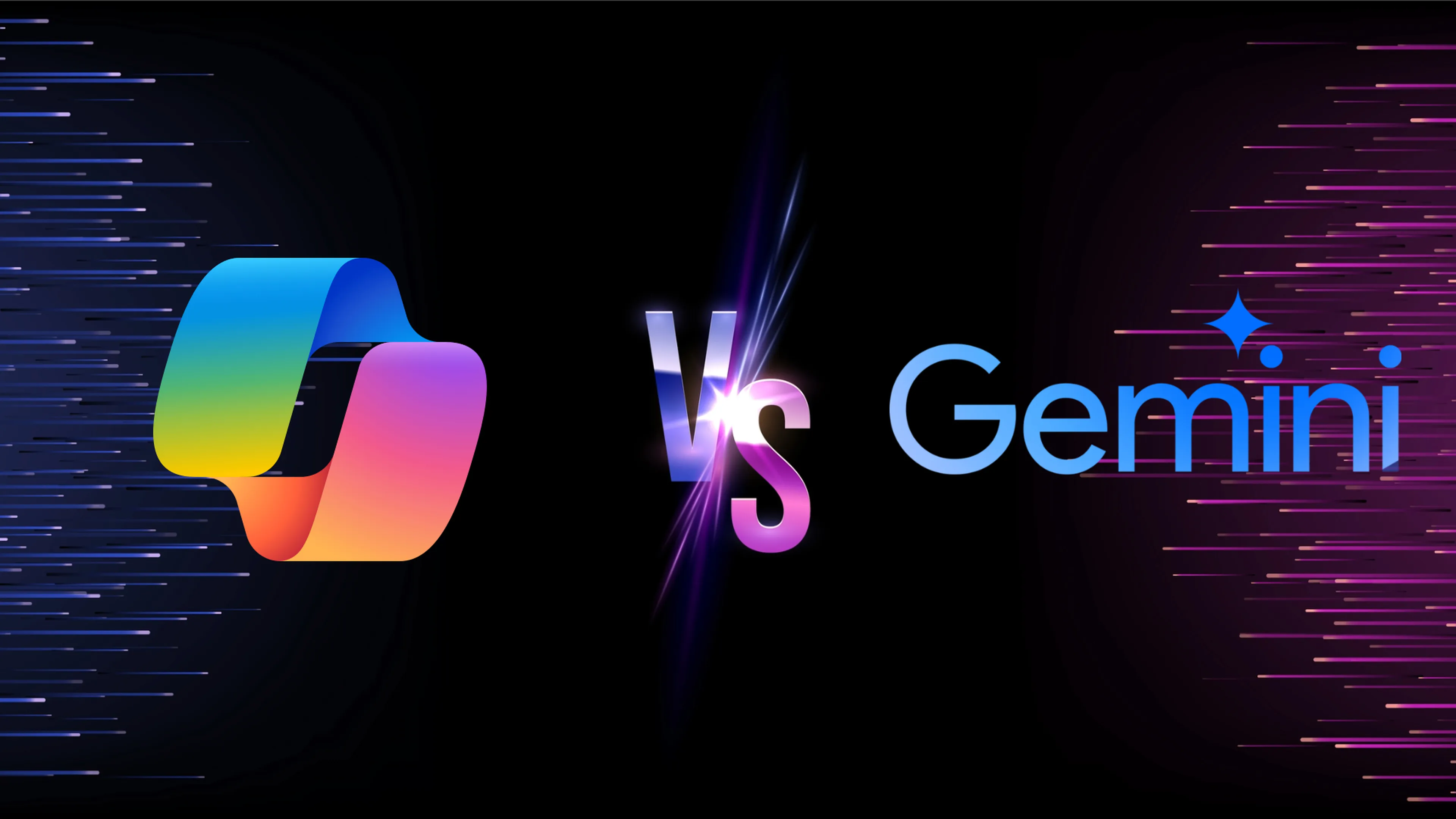As the demand for fast, intelligent decision-making continues to surge, businesses across the board continue to struggle with the age-old conundrum of volume vs. time when it comes to their data management. Companies that can interpret and act on insights faster than their competitors are more likely to thrive. Tableau has long been a front-runner in helping organisations unlock the power of their data through intuitive visual analytics.
But with the next wave of data complexity, collaboration demands, and AI integration, even the best tools must evolve. Tableau Next is that evolution: a forward-thinking, next-generation platform designed to help growth-minded enterprises accelerate their analytics maturity, decision-making, and innovation.
What is Tableau Next?
Tableau Next is the latest iteration of Salesforce’s well-known flagship analytics platform, designed to bring pioneering technology, particularly AI, machine learning, and automation, into the realm of business intelligence. Building on Tableau’s core strengths of visual exploration and dashboarding, Tableau Next introduces a more seamless, intelligent, and scalable experience across the data lifecycle.
At its core, Tableau Next is about enabling smarter, faster, and more collaborative data work. It incorporates Einstein AI natively into the platform, allowing users to receive AI-generated insights, forecasts, and recommendations directly within their dashboards. On top of this, it brings natural language querying, automated data preparation, and auto-generated visuals, reducing the manual heavy lifting on data analysts and enabling more people across an organisation to work effectively with data.
How is Tableau Next Different from Tableau?
While classic Tableau has been powerful in empowering users to explore and visualise data, Tableau Next goes a step further by integrating advanced technologies that address previous limitations in accessibility, scalability, and proactivity.
1. Deeper AI Integration with Einstein Discovery
Tableau Next integrates Salesforce’s Einstein Discovery capabilities, allowing users to generate predictive models without needing a data science background. This means even business users can understand not just what happened, but why it happened and what will happen next, making data-driven forecasting significantly easier and more accurate.
2. Ask Data and Explain Data Upgraded
Natural language processing in Tableau Next has been significantly enhanced. Users can now type or even speak questions like “What were our top-performing regions in Q1?” and instantly get visual answers. The updated Explain Data feature uses AI to provide context and drivers behind unexpected data points, giving decision-makers immediate clarity without having to lose time doing manual digging.
3. Accelerated Data Prep and Automation
With Tableau Prep Builder Next, repetitive data cleaning and prep tasks are now more automated than before. Smart recommendations guide users through complex data wrangling, and scheduled flows can keep datasets up-to-date without human intervention.
4. Unified Experience Across Platforms
Tableau Next emphasises cloud-native architecture and integration with Salesforce Data Cloud, providing real-time access to vast volumes of customer and operational data. Whether users are in Tableau, Slack, or CRM tools, analytics and actions are now closer than ever, thanks to embedded analytics and better cross-platform interoperability.
5. Stronger Collaboration and Governance
New capabilities support more robust governance, lineage tracking, and collaboration. Features like Data Stories allow users to share insights as narrative text within dashboards, increasing accessibility and understanding among non-technical stakeholders.
Getting a Competitive Edge Using Tableau Next
For growth-focused organisations, Tableau Next offers a critical competitive advantage: the ability to harness advanced analytics without overburdening their technical teams. With self-service tools enhanced by AI, more departments, from marketing to finance to HR, can engage in meaningful data work. This democratisation of analytics shortens the time taken from data to final decision.
In fast-moving industries, being able to forecast sales trends, spot operational inefficiencies, or detect customer churn early often means the difference between leading and lagging. Tableau Next’s predictive analytics, combined with real-time streaming data capabilities, empower businesses to act with both speed and confidence.
As organisations scale, so do their data challenges. Tableau Next’s architecture is built for enterprise scalability, offering robust data governance, role-based permissions, and integration with data lakes, warehouses, and third-party tools. This ensures consistency and security as companies grow.
Lastly, in an increasingly hybrid work environment, Tableau Next's cloud-first design enables global teams to collaborate in real time, whether through embedded dashboards in Slack or by sharing data stories within CRM systems, creating a more connected and data-literate culture.
Conclusion
By combining the visual exploration that made Tableau famous with the power of AI, automation, and real-time collaboration, Tableau Next meets the modern demands of enterprises seeking speed, agility, and insight.
With its ability to empower users at every level to uncover, understand, and act on insights, Tableau Next sets a new standard for data-driven transformation. As data becomes the lifeblood of innovation, Tableau Next ensures you’re not just keeping up, you’re leading the charge.









